Samsung Droid Charge Review - Droid Goes LTE
by Brian Klug on June 22, 2011 7:47 AM EST- Posted in
- Smartphones
- Samsung
- LTE
- 4G
- Droid Charge
- Mobile
Cellular and 4G LTE
We’ve now talked about the cellular architecture of the HTC Thunderbolt and LG Revolution, it’s now the Droid Charge’s turn. The Thunderbolt has the privilege of being the sole 4G LTE smartphone capable of doing simultaneous voice and data on both 3G EVDO and 4G LTE. The LG Revolution and Droid Charge can both transact voice and data at the same time only when connected to 4G LTE.
The Charge does this with a very interesting combination of two basebands. 4G LTE connectivity is accomplished with Samsung’s very own CMC220 baseband, which is a category 3 device (same as Qualcomm’s MDM9600, and LG’s L2000) - 50 Mbps / 100 Mbps for upstream and downstream respectively on 20 MHz channels.
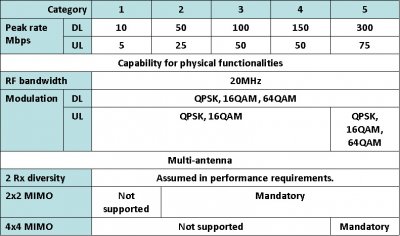
Like all the other devices, the Charge uses Verizon’s 4G LTE network on its 700 MHz spectrum, in LTE Band 13. We’ve talked extensively about Verizon’s 4G LTE network architecture in an exploratory piece already, but for a quick refresher Verizon currently is using 10 MHz channels with FDD, and has a total of 22 MHz of bandwidth. Even in markets where Verizon has licenses for additional spectrum, currently only upper C is being used. This is my first time seeing Samsung’s CMC220 on Verizon.
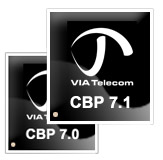
What’s particularly curious about the Charge is that there’s no Qualcomm baseband for CDMA2000. Both 1x and EVDO are handled by VIA Telecom’s CPB7.1 baseband. This is very interesting, as it’s the first time in a long while I’ve seen something other than Qualcomm used for a CDMA2000 baseband inside the United States, though in China Via Telecom is apparently a major player. For comparison, the Samsung Fascinate used Qualcomm’s QSC6085 baseband. This combination of things makes the Charge one interesting and unique device from a cellular perspective.
We don’t have to disassemble anything either, as the FCC has some nice shots of the Charge’s main PCB showing both basebands sitting pretty next to Hummingbird and its PoP LPDDR2. Center bottom is the VIA Telecom 7.1 (you can even make out VIA), and above it is the Samsung CMC220.
Before we get to performance, let’s also go over what the Charge exposes for controlling these two radios. Inside Wireless & Network and Mobile Networks is a system selection toggle. Tap this and you can change from “LTE automatic” to “CDMA mode.” The former lets the Charge hand up to LTE whenever it is available, the latter forces the Charge to only use EVDO and 1x data. If you’re in an LTE market and want to save some power, this is handy. However, there’s no ‘LTE only’ mode that would force the Charge to hang onto LTE a bit longer, although its behavior wouldn’t offer any power savings.
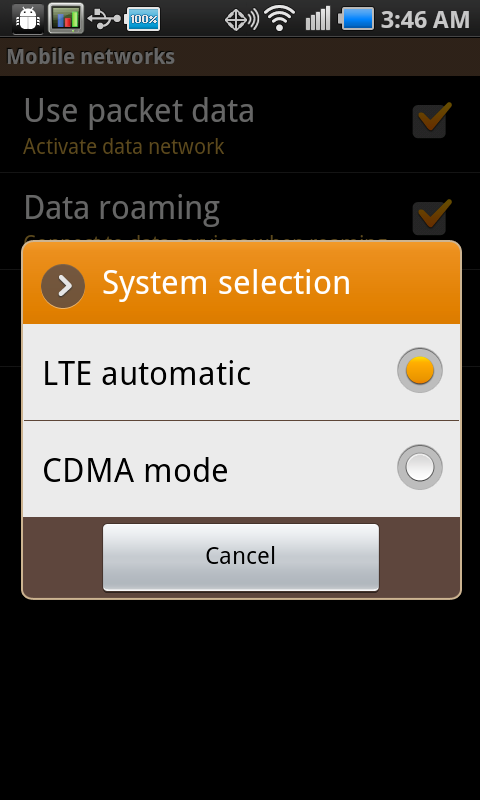
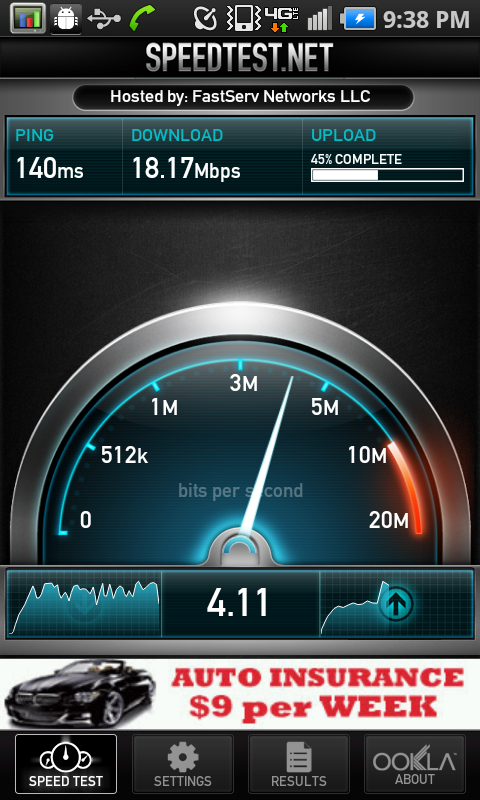
I was very impressed with the way the Charge hands over from EVDO to LTE most of the time, and never found myself want for more low-level control. In this regard, Samsung has done a nice job keeping data sessions working across the two basebands. My only complaint is that every once in a while, the LTE data session sometimes stalls briefly – sometimes for a a few seconds, other times for a few minutes. When that happens, you’ll see the uplink green arrow blink, but no orange downlink arrow. Rebooting the device fixes things.
I seem to have developed the bad habit of taking so long with devices that they see their first firmware update and fixes. Then issues that I’ve identified in the launch software are addressed, and I have to go re-test everything to find what new issues have appeared in their stead. The Charge received its first major update last week, which both fixed the broken WiFi hotspot functionality (which previously stopped working exactly when May ended), and also changed the Charge’s bars to closely mimic those of Android 2.3.
The update purports to improve handover between 3G EVDO and 4G LTE, improve call time battery life, improve call quality, enhance browser performance, and also improve GPS fix times among other things. I honestly couldn’t detect a measurable improvement in handover (the stall issue I mentioned still persists), and as I’ll show later call time battery life is better by a very small margin. I’ll talk more about the other changes in their respective sections.
One subtle difference I noticed is that I can’t update the PRL on the Droid Charge the same way I could on the Thunderbolt. Dialing *228 to do an over the air PRL download yields the following:
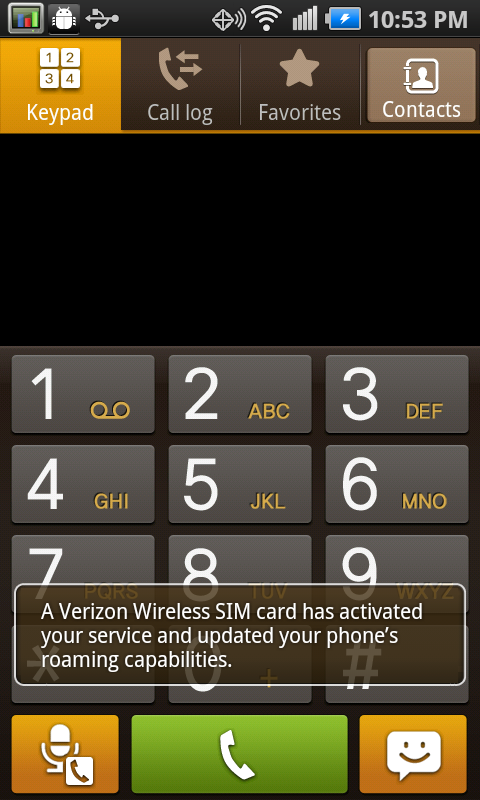
It appears that we now have confirmation that both LTE and CDMA are using the USIM/CSIM in the device for both their roaming capabilities and cellular identities. I asked Vivek to do the same on his LG Revolution evaluation unit and he saw the same behavior. Back with the Thunderbolt, the OTA download would appear to complete happily just like any other CDMA handset. Regardless, in theory, you should now be able to swap SIMs (and thus your number, account, and service) between at least three handsets on Verizon – wow, that’s one sentence I wouldn’t have ever believed I’d write a year ago.


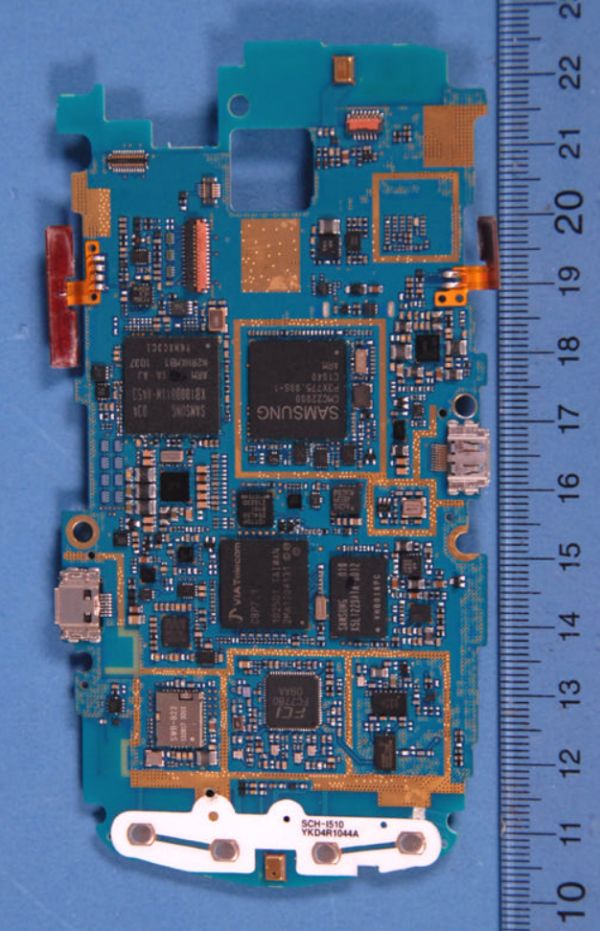








61 Comments
View All Comments
crydee - Wednesday, June 22, 2011 - link
Samsung never updates.. I still have the Galaxy first Android on AT&T and still no working GPS.sprockkets - Wednesday, June 22, 2011 - link
I saw the picture and thought this was a review of the new iphone! Oh my! Now I can see why apple is so angry!GFY JOBS!
spctm - Wednesday, June 22, 2011 - link
Not sure why it is so but I am running Cyanogenmod 7.1 nightly on a nexus one and I get these scores.SunSpider: 3354.2
BrowserMark: 54697
Linpack: 36.7 (Free Version)
Sunspider and Browsermark are way faster on cm-7.1, which is quite surprising as it is running Android 2.3.4 base. But Linpack is more along the lines with what Brian got. Not sure if the free version's ad streaming would have some impact on floating point operations of Linpack.
Just thought I would post this observations and see if others have similar results.
silverblue - Wednesday, June 22, 2011 - link
Looks to be a good phone, though I wonder if it'll be better than the Charge.Omid.M - Wednesday, June 22, 2011 - link
"I have an odd Sensation that the next one will be exciting..."Hah!
Can't wait for the Galaxy S 2 review. Hope it lives up to AT expectations.
@moids
name99 - Wednesday, June 22, 2011 - link
"My only complaint is that every once in a while, the LTE data session sometimes stalls briefly – sometimes for a a few seconds, other times for a few minutes. When that happens, you’ll see the uplink green arrow blink, but no orange downlink arrow. Rebooting the device fixes things.
"
Jesus Christ.
THIS is precisely why Apple has nothing to fear, as long as competitor vendors ship crap like this --- and reviewer web sites are so blinded by Apple hatred that they give them a pass. I mean, WTF --- a phone that you, randomly and frequently, have to reboot, and the reviewer thinks this is just par for the course?
This is 2011, not 1982. Forcing a reboot to fix random problems should be a strange and unusual situation, not a daily occurrence!
ThomasA - Wednesday, June 22, 2011 - link
Long time VZW customer, since GTE. This may change. The future should be interesting with the '4G' push, and now, the 'new' Verizon tiered data plans looming. Having a '4G' device will require either a big wallet or detailed restraint.I suggest using a cheap flip-phone for chit-chat and another device on hotspots (laptop, netbook, iPod touch) for web needs. Unless you enjoy transfusing the telecoms.
sitharien - Wednesday, June 22, 2011 - link
You are both correct, I was way mistaken. I look forward to Anand's review. I am holding off on any upgrade of my EVO 4G until I get a better picture of the Android battery landscape.BGK - Wednesday, June 22, 2011 - link
So what's the verdict on Charge vs Thunderbolt. If battery life is about the same, that leaves the screen as the Charge's major advantage.Also, do you think some of discrepancies in battery life in the reviews had to do with the reviews of the thunderbolt being done on older versions that may have been less efficient?
tdenton1138 - Thursday, June 23, 2011 - link
Visit XDA or Android Central forums. You can read up about both phone for people who use them every day... I love my Charge (every phone does seem to have its quirks) and don't imagine I'll bother upgrading for quite some time. Great screen, no lag (voodoo lagfix is needed here - why does Samsung use RFS filesystem when EXT4 is so much better?), acceptable battery, hackable. Until someone can demonstrate a real need for dual+ core on a phone (now tablets perhaps...?), I'm happily sitting out of the upgrade race for a while.